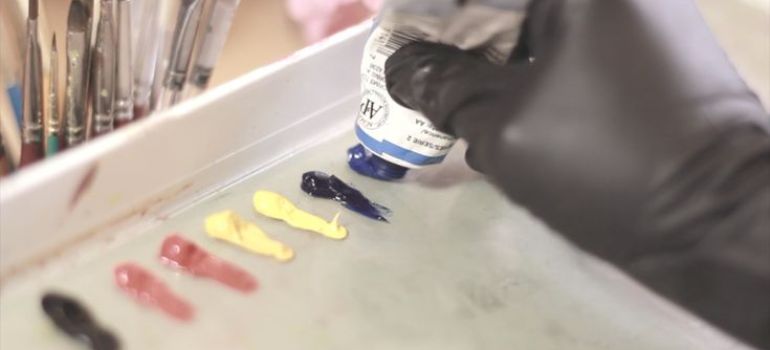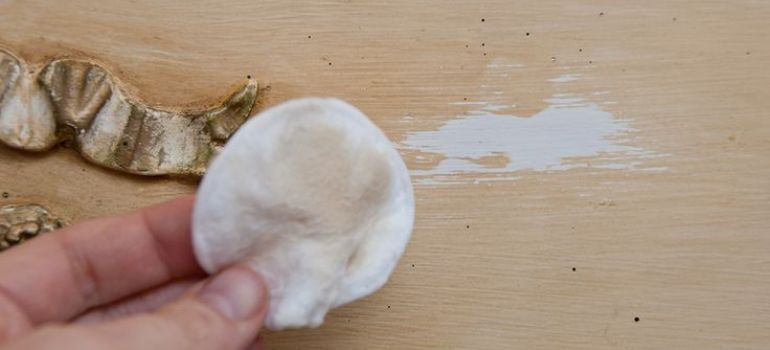Removing dried oil-based paint can be a daunting task, but with the right tools and techniques, it can be done effectively. Whether it’s splatters on your wooden floors, metal surfaces, or concrete driveways, tackling dried paint requires patience and precision. In this guide, we’ll walk you through the step-by-step process of removing dried oil-based paint from various surfaces, ensuring a clean and spotless finish.
Understanding Dried Oil-Based Paint
Before diving into the removal process, it’s crucial to understand the nature of dried oil-based paint. Unlike water-based paint, which can be easily cleaned with water, oil-based paint forms a tough, durable layer once dried. This makes it more challenging to remove and requires specific methods and solvents for effective removal.
Tools and Materials Needed
To successfully remove dried oil-based paint, gather the following tools and materials:
Preparing the Area
Before starting the removal process, prepare the surrounding area by covering nearby furniture, floors, and objects to prevent any accidental damage from paint splatters or spills. Ventilate the area well to ensure proper airflow and wear appropriate safety gear, including gloves, eyewear, and a respirator mask, especially when working with chemical solvents.
Removing Dried Oil-Based Paint from Different Surfaces
Removing from Wood

To remove dried oil-based paint from wood surfaces, follow these steps:
Removing from Metal
Removing dried oil-based paint from metal surfaces requires a slightly different approach:
Removing from Concrete
Removing dried oil-based paint from concrete surfaces can be challenging but achievable:
Applying the Removal Method
Once you’ve selected the appropriate removal method for your surface type, follow the outlined steps carefully to ensure effective paint removal without causing damage to the underlying material.
Cleaning Up
After removing the dried oil-based paint, clean up the work area by disposing of any used rags or materials properly. Wash your hands thoroughly with soap and water, and ventilate the area to eliminate any lingering fumes from the paint solvents.
Safety Precautions
When working with paint thinners or solvents, always wear protective gear, including gloves, eyewear, and a respirator mask, to avoid exposure to harmful fumes and chemicals. Work in a well-ventilated area and follow the manufacturer’s instructions for safe use and disposal of the products.
Alternative Methods
In addition to traditional paint removal techniques, there are alternative methods you can try, such as using heat guns, steamers, or eco-friendly paint strippers. Explore different options to find the method that works best for your specific situation and preferences.
How to Choose the Right Paint for Your Home
Selecting the right paint for your home can be overwhelming with so many options available in the market. Here are some tips to help you make the best choice:
Conclusion
Removing dried oil-based paint may seem like a daunting task, but with the right tools, techniques, and a little patience, it can be accomplished effectively. By following the outlined steps and safety precautions, you can restore your surfaces to their original condition, free from unsightly paint stains and splatters.
FAQs
While some removal techniques may overlap, latex paint typically requires different solvents and methods for effective removal. Always check the paint type and surface compatibility before attempting removal.
To prevent dried paint, clean up spills and splatters immediately with soap and water or the appropriate solvent for the paint type. Protect surfaces with drop cloths or masking tape before painting to minimize accidental spills.
When using chemical solvents indoors, ensure proper ventilation by opening windows and using fans to circulate air. Consider using low-odor or eco-friendly solvents and follow safety guidelines provided by the manufacturer.
While it’s possible to reuse paint thinner or mineral spirits, it’s essential to strain and store them properly in a sealed container away from heat sources or open flames. Dispose of used solvents according to local regulations.
If paint thinner comes into contact with your skin, immediately wash the affected area with soap and water and seek medical attention if irritation or adverse reactions occur.



